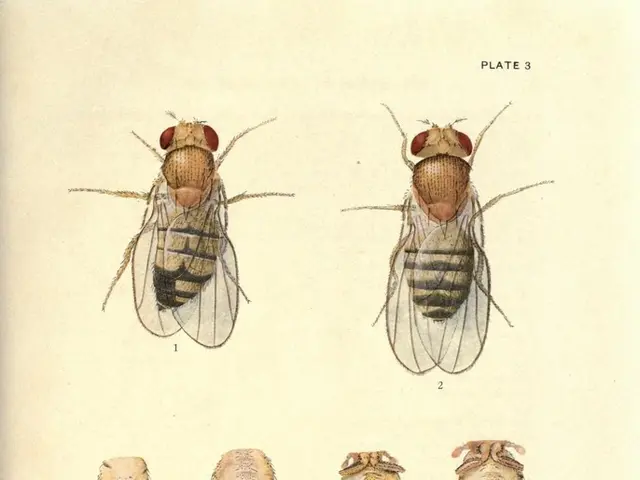Caring for the Giant Isopod (Porcellio hoffmannseggi) - A Comprehensive Guide
Get ready to dive into the world of the mighty Titan Isopod, or Porcellio hoffmannseggi, as it's officially known.
These colossal crustaceans reign supreme among isopods, dazzling hobbyists due to their sheer size and unique characteristics. Here's a lowdown on how to care for these Spanish magnificents and where to make the most of their superpowers.
Titan Isopod Care Breakdown
Originating from the sun-drenched area of southern Spain, the Titans may just be the biggest giants in the world of isopods...or so the debate goes. Some of these stunners grow up to 4 cm fully grown, rendering them undeniably massive!
Luckily, Porcellio hoffmannseggi is relatively easy to keep as a pet and hold in captivity. Often considered the most forgiving among its giant Spanish kin, it's also pretty easy to handle. Be warned, though: some isopod keepers have struggled with poor survivability and reproduction rates. We'll delve into potential causes shortly.
Container & Enclosure
Contrary to their Mediterranean roots, Titan Isopods prefer drier, low-humidity environments with plenty of ventilation. To house these goliaths, you'll want a large container with multiple air holes. A shoebox-sized Tupperware box is a decent starting point, just remember to drill some holes. You could also snag an inexpensive plastic vented enclosure on Etsy.
Remember, given their size, they'll need ample space but can also be quite territorial. This territorial nature can lead to these isopods causing serious damage to each other. To avoid this, consider keeping cultures in appropriately-sized containers, provide lots of separate hiding areas, or aggressively divide colonies into smaller cultures.
Habitat & Conditions
While isopods aren't built to thrive exclusively in dry environments, the Titans join an exclusive club of species that can manage it. That's not to say they don't need access to moisture to survive; it's just that dry isn't —you guessed it— a desert.
To maintain a dry substrate, create a moisture gradient with the common addition of damp areas made with sphagnum moss where the isopods can retreat to. The key is humidity should be kept as low as reasonably possible with plenty of ventilation, and room temperature should be comfortable unless you're a fan of ice-cold living quarters.
What to Feed 'Em
While their rough exterior may deceive you, Titan Isopods have delicate appetites in comparison to their size...and fellow isopods. They prefer decaying wood over leaf litter, but whatever you offer, remember to also include leaf litter for that essential variety. You can supplement with standard isopod foods, like our helpful Isopod Superfood, and vegetables scraps (carrot tops, zucchini, sweet potatoes), omitting citrus fruits and onions.
Although they may not be the cleanest crew in the terrarium, with proper care and space, they can thrive as environmentally-friendly options. And if you're keeping larger reptiles, these walking targets could also make an accidental meal.
Breeding
Adored for their simplicity (for the most part), breeding Titan Isopods is straightforward if you have a balanced collection of both males and females. Spotting the difference between the two is easy. Males have elongated "tails" (or uropods), while females are a little simpler in design.
On the whole, provided you have a healthy and stable culture, reproduction tends to proceed smoothly with average-sized broods. The territorial nature of the females can lead to some protection during the first few months, making breeding a bit more complicated.
Morphs & Alternative Choices
While the Titan Isopod isn't exactly a flashy species, it boasts subtle charms with a few other morphs available. These include the "Black" locale with a block color and darker hue, the "Brown" or "Chocolate" morph, and the "White Out," a rare albino version.
If you're a daredevil isopod keeper in search of a challenge, you can venture into the realm of other giant Porcellio Isopods, such as Porcellio expansus, Porcellio dilatus, and Porcellio magnificus. The latter being more advanced options for true aficionados.
Home-and-garden hobbyists might find the Titan Isopod's habitat requirements intriguing, needing a large, ventilated container with ample space and dry conditions. Pets enthusiasts, especially those who enjoy unique and low-maintenance creatures, will appreciate that the Titan Isopod, or Porcellio hoffmannseggi, can be relatively easy to keep as a pet, given the right environment and care.








